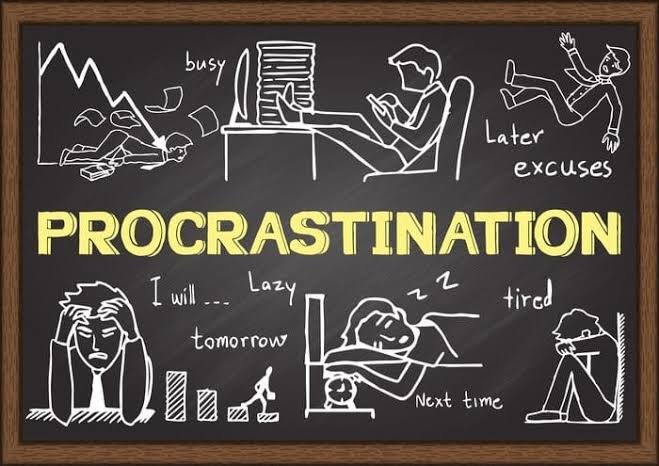Overcoming procrastination is more important than ever in a world full of digital distractions, fast communication, and growing personal and work demands. As of July 2025, procrastination still affects people of all ages and jobs, lowering productivity, harming mental health, and delaying goals.
Procrastination is not just laziness. It often comes from fear of failure, wanting things perfect, confusion, or feeling overwhelmed. The good news is it can be controlled and beat with simple, practical steps. With discipline, routine, and mindfulness, anyone can stop procrastinating and reach their full potential.
Understanding the Root Causes of Procrastination
To effectively overcome procrastination, it is vital to understand why it happens in the first place. Many people procrastinate because they feel overwhelmed by a task or fear that they won’t be able to complete it perfectly. This leads to avoidance, which then triggers guilt and more stress, creating a cycle that can be difficult to break.
Others procrastinate due to a lack of motivation or unclear goals. When a task lacks personal meaning or when the rewards feel too distant, it becomes harder to take immediate action. In 2025, psychologists continue to emphasize that identifying the root cause of procrastination is the first step toward finding the right solution.
Self-awareness helps individuals detect when they are slipping into procrastination and why. Whether it’s due to boredom, anxiety, or distractions, knowing the trigger allows you to respond with a more constructive behavior rather than letting it spiral.
Starting Small with the Two-Minute Rule
One of the most effective techniques for breaking through procrastination is the Two-Minute Rule. This method, popularized by productivity experts and supported by habit formation research, suggests that if a task takes less than two minutes to complete, do it immediately.
This approach works because it removes the mental barrier that often leads to avoidance. Even for larger tasks, committing to just two minutes of focused effort often leads to continued progress. Starting is usually the hardest part, and this method leverages momentum to keep you going.
In 2025, this technique is integrated into popular productivity apps and planners, encouraging users to break big goals into tiny steps and initiate action without overthinking. It is a simple yet powerful strategy that builds consistency over time.
Setting Clear and Achievable Goals
Clarity plays a major role in overcoming procrastination. Vague or unrealistic goals create confusion and resistance. By contrast, clear, specific, and achievable goals provide a roadmap and reduce anxiety about where to begin.
Effective goal setting includes defining the task, setting a deadline, and determining the exact outcome you want. For example, instead of saying “work on my assignment,” a clearer goal would be “write the introduction to my assignment by 3 p.m.”
As of July 2025, smart goal-setting tools, including digital templates and automated reminders, are widely used by students, professionals, and creatives. These tools help users structure their tasks into bite-sized pieces, making it easier to stay on track and avoid last-minute panic.
Using Time Blocking to Create Structure
Time blocking is a technique where you schedule specific blocks of time for focused work. This method works well for combating procrastination because it introduces structure, reduces decision fatigue, and creates a visual plan for your day.
Rather than relying on motivation, time blocking relies on commitment. By assigning a time for every task, even leisure or rest, you give each activity a defined space and limit the opportunity for unproductive drifting.
In 2025, digital calendars now integrate AI features that analyze your work habits and recommend optimal time blocks based on your energy levels and task difficulty. This data-driven approach enhances discipline and accountability, helping people overcome procrastination through design, not willpower alone.
Eliminating Distractions and Creating a Focused Environment
Digital distractions are among the biggest enablers of procrastination. Social media, instant messaging, and email notifications constantly pull attention away from meaningful work. To break this pattern, it’s essential to create a focused work environment.
Start by turning off non-essential notifications and using distraction-blocking tools during work sessions. Designate a physical or digital workspace that is clean, organized, and free from unnecessary noise.
As of 2025, workspace design apps and productivity headsets with noise cancellation are helping people reduce distractions more effectively than ever. Even small changes, like using ambient sound apps or implementing the Pomodoro Technique, can significantly increase concentration and reduce procrastination.
Practicing Self-Compassion and Reframing Thoughts
Many people beat themselves up for procrastinating, which only adds shame and discouragement to the mix. A more effective approach is to practice self-compassion. Understand that procrastination is a common human behavior and that overcoming it is a process, not an overnight fix.
Instead of labeling yourself as lazy or undisciplined, reframe the experience as an opportunity to grow. Ask yourself what led to the delay, what you can learn from it, and how you can approach things differently next time.
In 2025, the conversation around productivity is shifting toward emotional well-being. Mental health professionals now integrate cognitive behavioral techniques with productivity coaching to help individuals manage their inner critic and foster more supportive internal dialogue.
Rewarding Progress and Building Habits
Celebrating small wins is essential to sustaining motivation. Each time you complete a task or stick to your plan, acknowledge the effort. This builds a positive association with action and gradually rewires your brain to favor productivity over procrastination.
You can reward yourself with short breaks, enjoyable activities, or even a simple acknowledgment of your effort. Building habits through repetition and reward reinforces the behavior, making it easier to act in the future without resistance.
In 2025, habit-tracking apps use gamification to make this process enjoyable. Users earn points, streaks, and badges for sticking to their goals, turning the act of progress into a satisfying and motivating experience.
Conclusion: Turning Action into a Daily Practice
Overcoming procrastination is not about becoming perfectly productive but about taking consistent, small steps that move you forward. It involves self-awareness, planning, structure, and compassion. By using techniques like the Two-Minute Rule, time blocking, and clear goal setting, anyone can break through inertia and take control of their time and energy.
As of July 2025, the tools and knowledge available to combat procrastination are more advanced and accessible than ever. But the most important change happens within—the shift from avoidance to action. With commitment and patience, procrastination can become a thing of the past, and progress can become a natural part of your everyday life.



